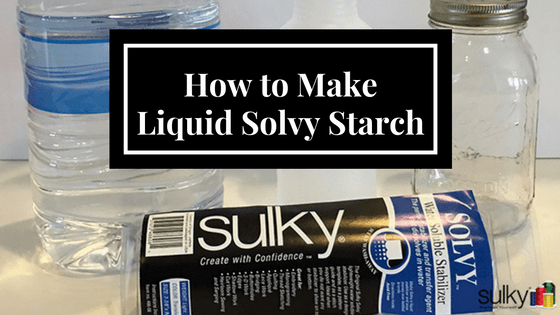 As I said in my last post, I prefer to make my own starch and my favorite recipe the is one from the last post because it takes the wrinkles out of the fabric without leaving anything but a nice smell behind, but sometimes, I need a little more stability. When I am piecing anything on the bias or sewing with more delicate fabrics, I really want the fabric to act more like cardboard than fabric during the actual sewing process. The best way to achieve that is to make Liquid Solvy!
As I said in my last post, I prefer to make my own starch and my favorite recipe the is one from the last post because it takes the wrinkles out of the fabric without leaving anything but a nice smell behind, but sometimes, I need a little more stability. When I am piecing anything on the bias or sewing with more delicate fabrics, I really want the fabric to act more like cardboard than fabric during the actual sewing process. The best way to achieve that is to make Liquid Solvy!
An added bonus is I can make this with the left over Solvy bits that I pull off of a machine embroidery project or if I have a little piece too small to use on the end of a roll. Here is the recipe:
Liquid Solvy Recipe

3/4 – 1 cup of Solvy ‘bits’
4 cups of distilled water
1/4 cup Rubbing Alcohol (optional)
Quart mason jar
Spray bottle
Chopstick
Either put your scrap Solvy Bits in the mason jar or cut up pieces of Solvy off the roll to add to the jar. Heat up 4 cups of distilled water. You want the bits to be small, so you can “chop” them up with a rotary cutter. As I mentioned in the last starch post, distilled water deosn’t have any minerals in it so it won’t leave any extra deposits on your fabric.
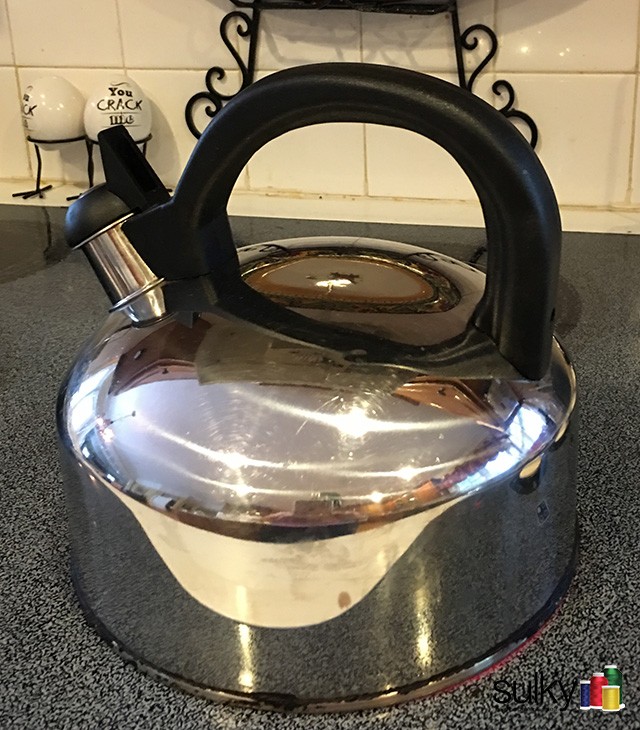 I heated mine up on the stove but not to the boiling point.
I heated mine up on the stove but not to the boiling point.
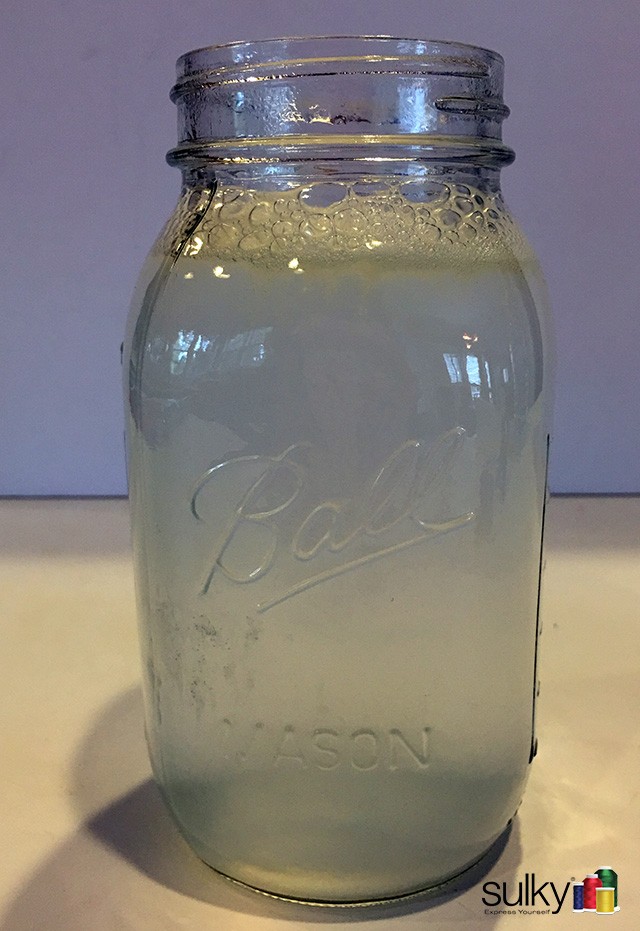 Pour the water into the jar with the Solvy bits.
Pour the water into the jar with the Solvy bits.
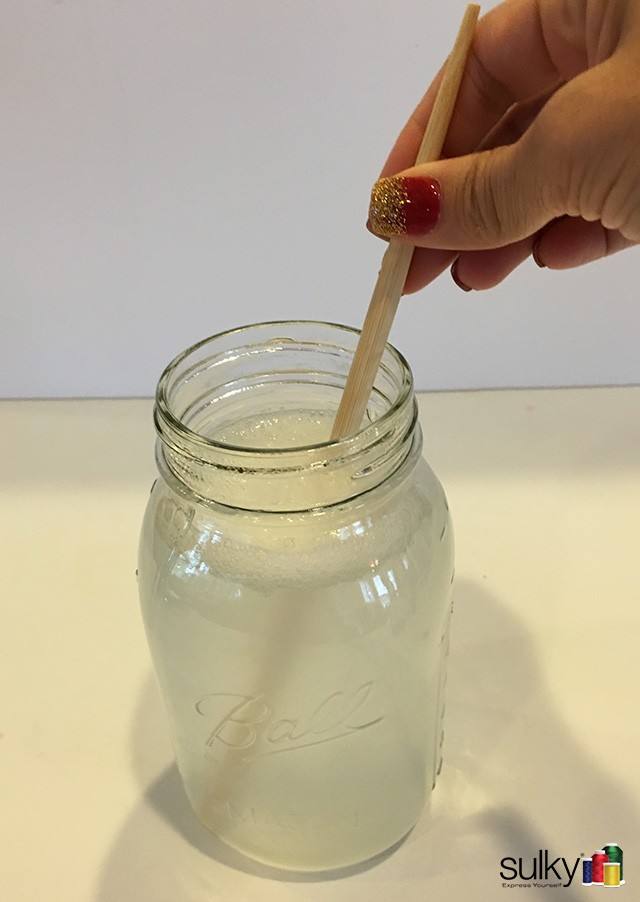 Use a chopstick to very gently stir the mixture until all the bits are dissolved. DON’T SHAKE IT! If you do, the mixture will foam up and the foam doesn’t go away (ask me how I know 🙂 )
Use a chopstick to very gently stir the mixture until all the bits are dissolved. DON’T SHAKE IT! If you do, the mixture will foam up and the foam doesn’t go away (ask me how I know 🙂 )
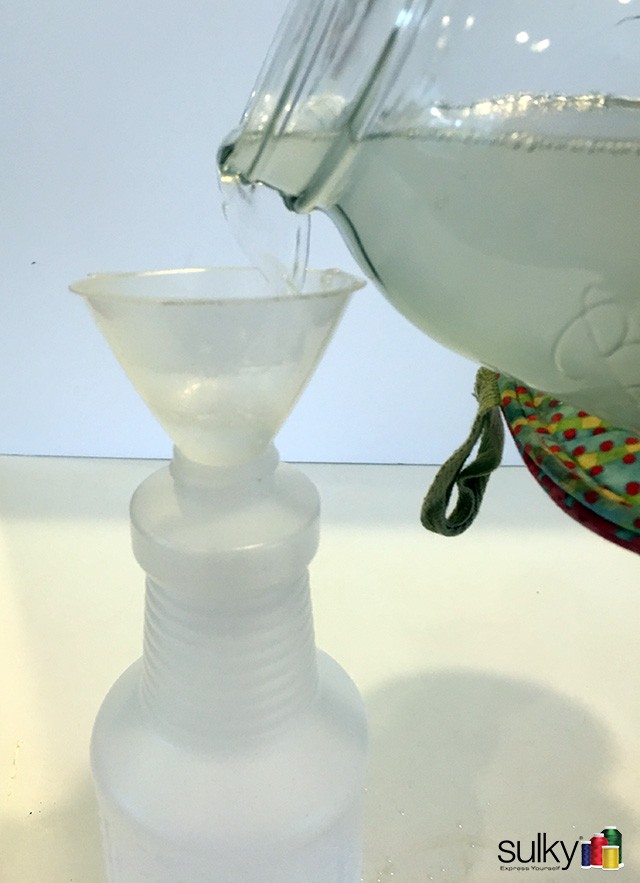 Let the mixture cool down if you need to, and then pour it into your spray bottle. If you decide to add the rubbing alcohol, your Liquid Solvy will last longer and you won’t need to refrigerate it to preserve it.
Let the mixture cool down if you need to, and then pour it into your spray bottle. If you decide to add the rubbing alcohol, your Liquid Solvy will last longer and you won’t need to refrigerate it to preserve it.
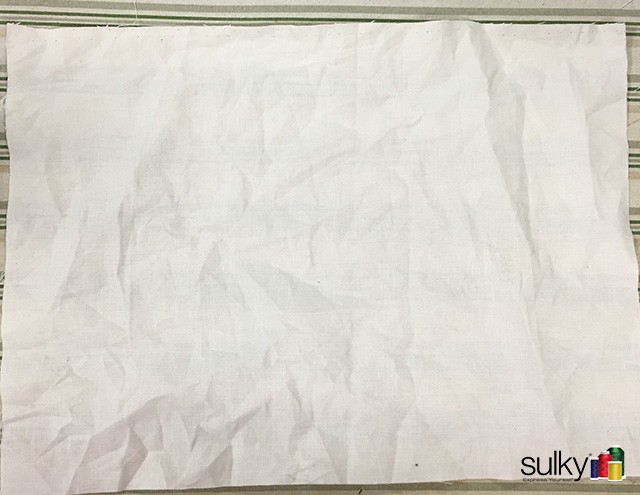 I tested the Liquid Solvy next to my other homemade starch side-by-side on a very wrinkled piece of fabric.
I tested the Liquid Solvy next to my other homemade starch side-by-side on a very wrinkled piece of fabric.
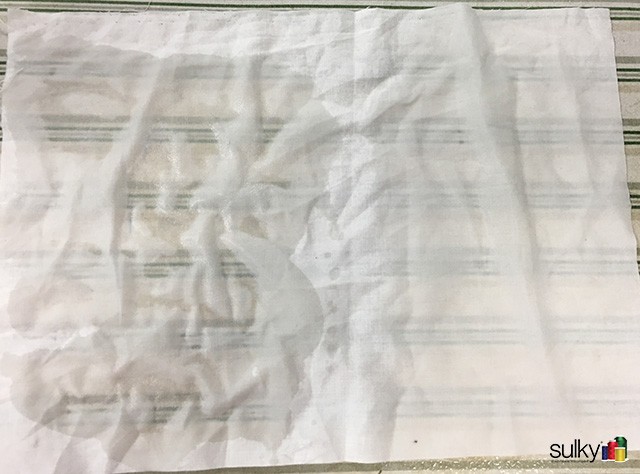 Both starches did a great job and getting out wrinkles.
Both starches did a great job and getting out wrinkles.
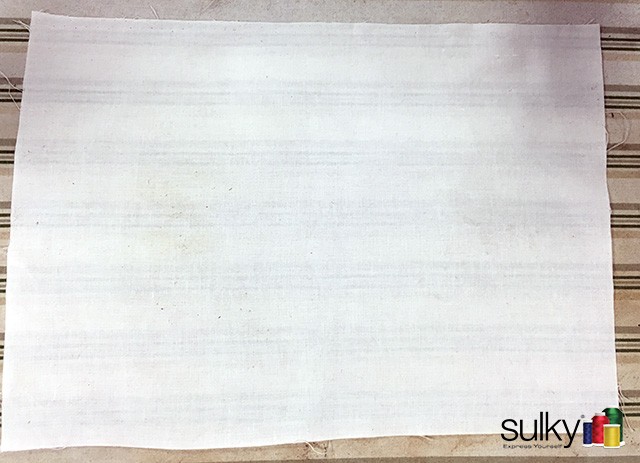
The vodka based starch did not change the feel of the fabric at all. It just took out the wrinkles. The Liquid Solvy left the fabric very stiff, which can be an advantage when piecing, especially when sewing on the bias.
In a thicker mixture, liquid Solvy can be painted on, and is a wonderful stiffener for thread bowls and thread art, too.
So now you have two recipes for starch. Which one do you think you will try? What kind of starch do you like? Let’s chat about it in the comments! I would love you hear what you think and what you use.
Happy Sewing!


I have enough Solvy bits to make a gallon! Thanks for the recipe.
I will do the Solvy one since I don’t have any Vodka at my house nor do I intend to buy it.
Good to get a recipe and use for the scraps. Thank you.
I would be able to use both for the reasons you presented to the readers. Thank you!
I don’t have alcohol or Solvy. What is the advantage of using Solvy starch over traditional Blue Star starch?
It is a nice way to use up Solvy scraps of you have them and if you make a thicker consistency, it will also stabilize you fabric for sewing.
Thank you so much for the recipes. I will be trying them soon.
I don’t have any “Solvy bits”, but would like to try this rather than the vodka recipe. Is there another way to achieve this?
You can always just use regular Solvy from the package. Simply cut it up some to fit into the jar or measuring cup. My guess is it would take about 1/4 yard or so.
Thanks for these recipes. I will be trying both.
Thanks for the recipes ! Will try both of them. I’ve made the Solvy paint on version before and it really makes it stifff.
Funny I got this today. Just yesterday I retrieved some of my Solvy scraps and put them in a small container thinking I remembered hearing about using the scraps but didn’t remember the recipe. I will have all 3 kinds: regular liquid starch, the home-made, best press, and now Solvy. Oops, that makes four kinds!! I guess the project will determine which one I use. I don’t think the home-made kind nor the best press makes the fabric stiff. Like you said Kelly, I think it just helps get the wrinkles out, as would water.
I have been doing the paint-on version for years, but use a bit less of alcohol. Generally, I don’t need to heat up the water, as mine solution sits a while between uses (in my sewing room) & has plenty of time to dissolve. If it gets too gelatinous, I just stir in a bit of warm water to the consistency I want. I tend to prefer the air-tight quart-size container, as it’s easy to drop in small items for thorough saturation. I think it’s good to have several options for starching articles & this feels like I’m doing my part to be ‘green’! Our plumber cautioned me not to dispose of this down the drain, but to pour it in the garden / grass (the rain & sun will dissolve it over time). So I try to rinse stiffened items out in a small hand-washing tub & toss the water outside (before putting in the washer, too).
Pingback: Lace and Fabric Stiffener from Water-soluble Stabilizer Scraps - Embroidery Tips and Blog